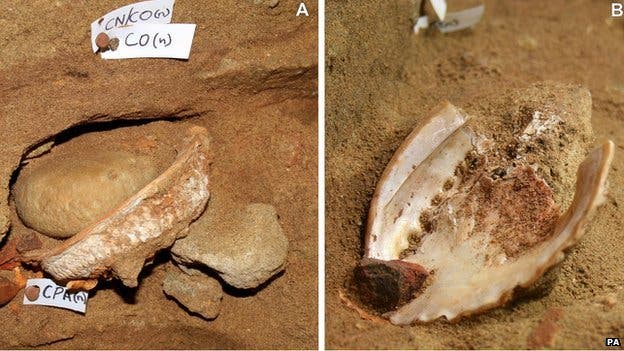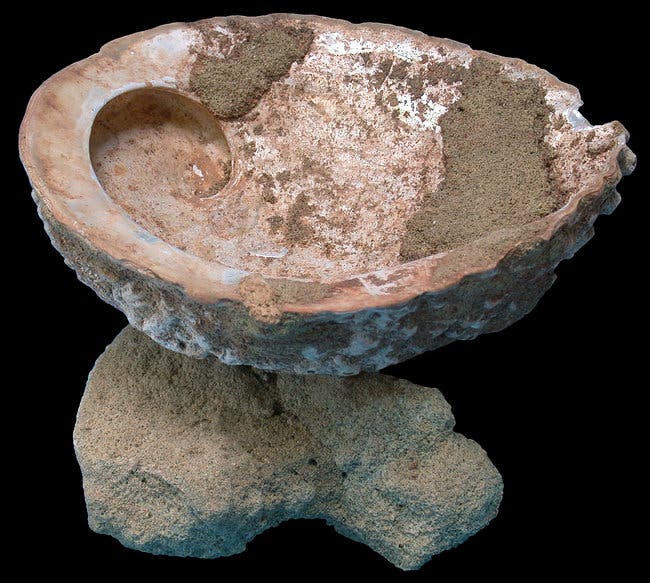
Overlooking the Indian Ocean, lies the beautiful Blombos Cave in South Africa. It was here that archeologists uncovered red and yellow dyes, as well as shell containers that could have been used as paint pots – all around 100,000 years old! This extraordinary find proves humans were thinking in a modern way hundreds of thousands of years ago.
From the cave, a beautiful panoramic view must have unfolded upon its occupants, one that might make an artist out of any beast. The ancient painters which used to dwell inside the cave had stones for pounding and grinding colorful dirt enriched with a kind of iron oxide, along with animal bone marrow and charcoal, to a powder known as ocher. Traces of the mixture were found both in the grindstones and on the shells, where the mixture was made, all of which packed neatly together left in the cave for hundred of millenia. Perhaps the artist finished his masterpiece and decided it was time to leave, but whatever’s the case, he left an invaluable time capsule behind for archeologists to study.

You see, the previous oldest evidence of ochre paint was found at another site in South Africa dated to about 60,000 years ago. What’s important to realize about ochre painting is that it provides insight towards man’s evolution. To manufacture the paint, it’s makers must have understood basic chemistry, since a number of ingredients need to be placed in the right order and proportions for the paint to work, to adhere to the cave surface wall for instance. This deliberate mixture “implies that people at the time had complex cognition,” said Lyn Wadley, an archaeologist at the University of Witwatersrand in Johannesburg.
Ancient humans more advanced than previously believed
These tools are 100,000 years old, a lot older than any other similar find, this implies that our ancestors were a lot more intelligent than history books give them credit for. The Blombos cave shows signs of being inhabited by humans since 130,000 years ago, however instead of remains, archeologists found, in 2008, two tool kits in an opening covered by sand. Ochre comes in colors from mellow yellow to raging red, and whoever made the ancient paint had a thing for red. Scientists from University of Bordeaux in France, concluded that the ochre was of the brightest of reds, after analyzing and dating the material. The assumed symbolic role of red ocher, the researchers believe, comes from the large amounts of the predominantly red material found at a number of African sites as old as 160,000 years.
Other artistic treasures have been found in Blombos before, including 49 beads smeared with ochre and large pieces of ochre inscribed with cross-hatch patterns that date to 77,000 years ago — widely recognized as the oldest known art. The study was published in the latest edition of the journal Science.






